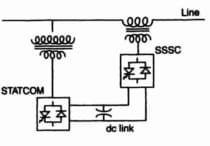Energy Performance Assessment of Motors and Variable Speed Drives
1. The efficiencies of induction motors remain almost constant between _____________loading.
a. 50% to 100%
b. 60% to 100%
c. 40% to 100%
d. 30% to 100%
2. When a motor has a _________________rating than that required by the equipment, motor operates at part load.
a. Higher
b. Lower
c. Constant
d. Fluctuating
3. While input power measurements are fairly simple, measurement of output or losses need a laborious exercise with extensive _____________facilities.
a. Measuring
b. Testing
c. Calculating
d. Observing
4. The measurement of stray load losses is very ______________and not practical even on test beds.
a. Easy
b. Difficult
c. Simple
d. Complex
5. Most motors are _____________such that the shaft is accessible to a tachometer or a strobe light.
a. Constructed
b. Planned
c. Designed
d. Calculated
6. Which of the following is true?
a. The line current load estimation method is used when output power can be measured and only amperage measurements are possible.
b. The line current load estimation method is used when output power cannot be measured and only amperage measurements are possible.
c. The line current load estimation method is used when input power can be measured and only amperage measurements are possible.
d. The line current
load estimation method is used when input power cannot be measured and only
amperage measurements are possible.
7. Which of the following is true?
a. The efficiencies of induction motors remain almost constant between 50% to 100% loading.
b. The efficiencies of induction motors remain almost irregular between 50% to 100% loading.
c. The efficiencies of induction motors remain almost irregular between 30% to 100% loading.
d. The efficiencies of induction motors remain almost constant between 70% to 100% loading.
Energy Performance Assessment of HVAC Systems
1.Air conditioning and refrigeration consume significant amount of _____________in buildings and in process industries.
a. Energy
b. Heat
c. Temperature
d. Fuel
2. One ton of refrigeration is the amount of cooling obtained by one ton of ice melting in one day:_____________,12,000 Btu/h or 3.516 thermal kW.
a. 3034 kCal/h
b. 3024 kCal/h
c. 3084 kCal/h
d. 3054 kCal/h
3. A _____________defined as the mass flow rate of the evaporator water multiplied by the difference in enthalpy of water entering and leaving the cooler, expressed in kCal/h, tons of Refrigeration.
a. Quality
b. Quantity
c. Amount
d. Value
4. Coefficient of Performance (COP) = Chiller efficiency measured in Btu output (cooling) _______________ Btu input (electric power).
a. Multiplied by
b. Divided by
c. Subtracted by
d. Added to
5. The compressor ___________can be measured by a portable power analyser which would give reading directly in kW.
a. Energy
b. Heat
c. Power
d. Pressure
6. Performance of smaller chillers and rooftop units is frequently measured in ________ .
a. EER
b. kCal
c. kW/ton
d. COP
7. _________commonly referred to as efficiency, but actually power input to compressor motor divided by tons of cooling produced, or kilowatts per ton (kW/ton)
a. EER
b. kCal
c. kW/ton rating
d. COP
8. Chiller efficiency measured in __________ output (cooling) divided by Btu input (electric power).
a. Btu
b. kCal
c. kW/ton rating
d. COP
9. In case where hot well and cold well are available, the flow can be measured from the tank level dip or rise by switching off the __________ pump.
a. Gear
b. Secondary
c. Tertiary
d. Compressor
Energy Performance Assessment of Lighting Systems
1. Lighting is provided in industries, commercial buildings, indoor and outdoor for providing _________________ working environment.
a. On edge
b. Comfortable
c. Luxurious
d. Unpleasent
2. ____________ is a unit of light flow or luminous flux. The lumen rating of a lamp is a measure of the total light output of the lamp.
a. Lumen
b. Lux
c. Watts
d. Ampere
3. _____________________ is the average maintained illuminance provided on a horizontal working plane per circuit watt with general lighting of an interior.
a. Installed load efficacy
b. Lux
c. Circuit Watts
d. Lamp circuit efficacy
4. _____________ is the metric unit of measure for illuminance of a surface. One lux is equal to one lumen per square meter.
a. Lumen
b. Lux
c. Watts
d. Ampere
5. _________________ is the total power drawn by lamps and ballasts in a lighting circuit under assessment.
a. Lumen
b. Lux
c. Circuit Watts
d. Ampere
6. ___________________ is the amount of light (lumens) emitted by a lamp for each watt of power consumed by the lamp circuit, i.e. including control gear losses.
a. Lumen
b. Lux
c. Circuit Watts
d. Lamp circuit efficacy





0 Comments
If you have any doubt, feel free to ask.